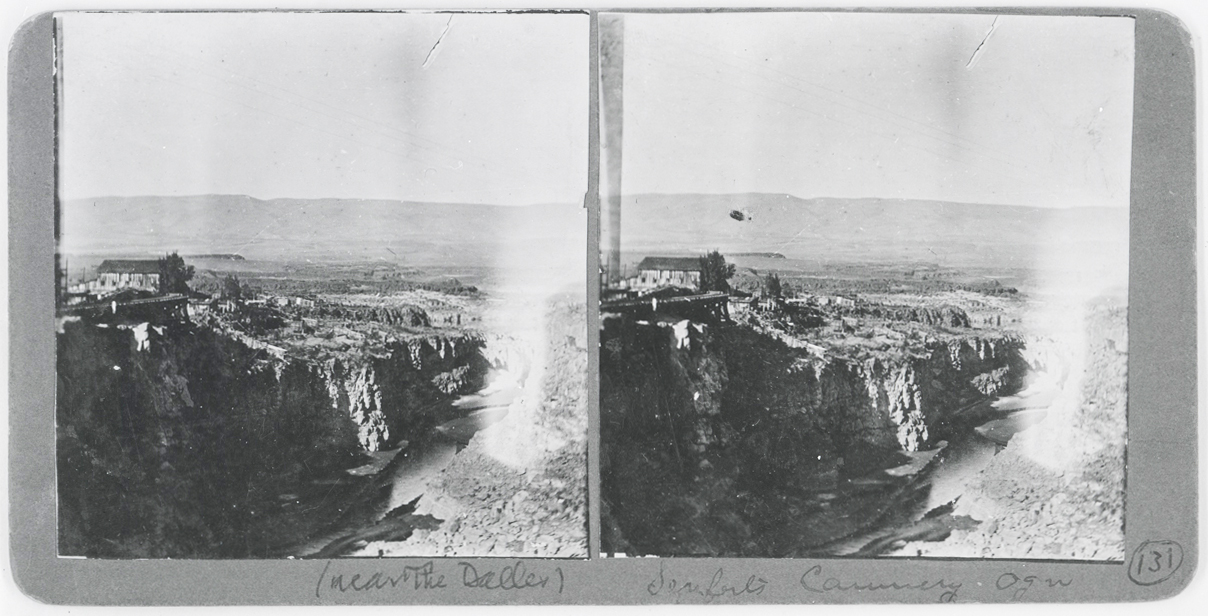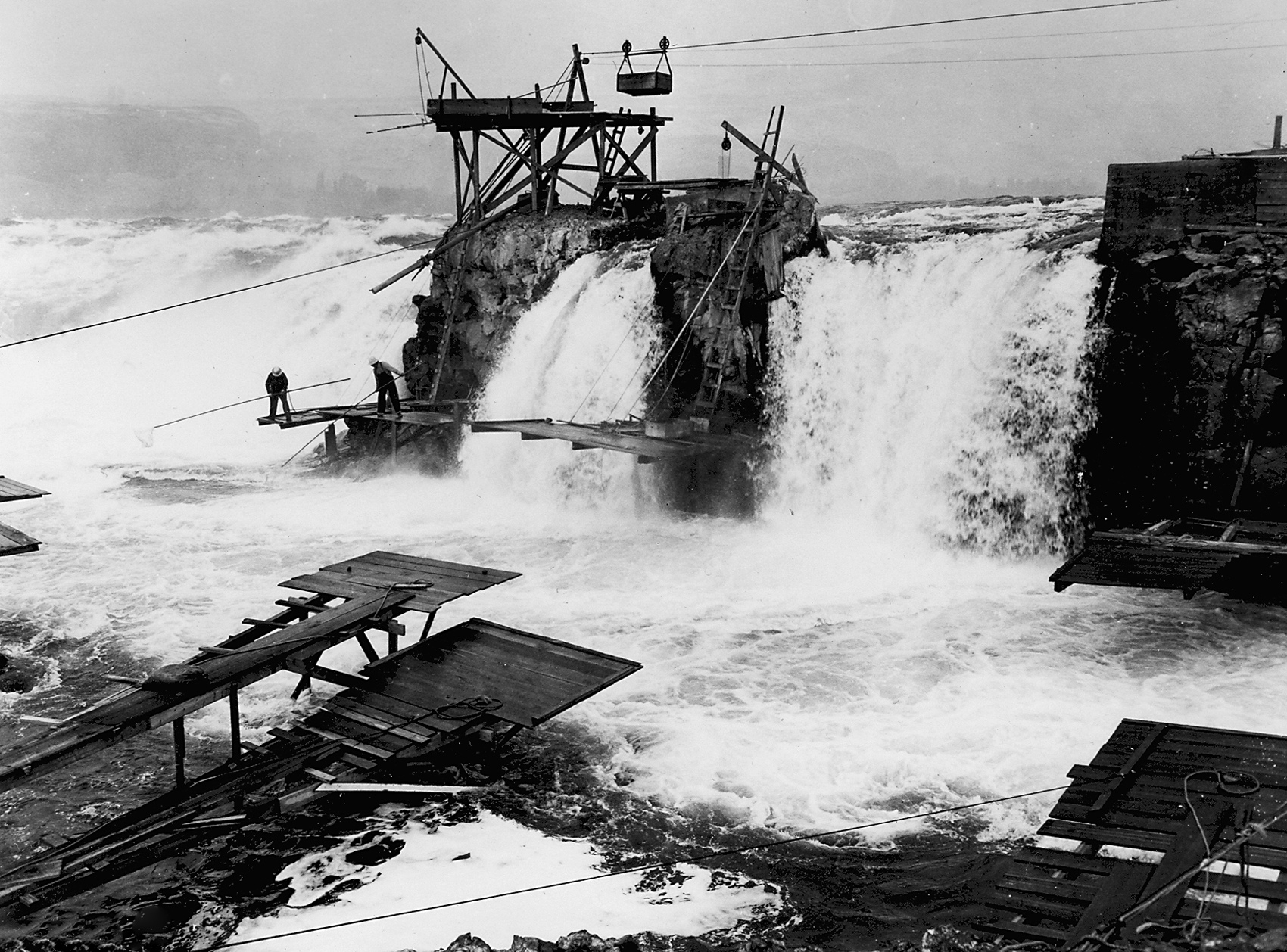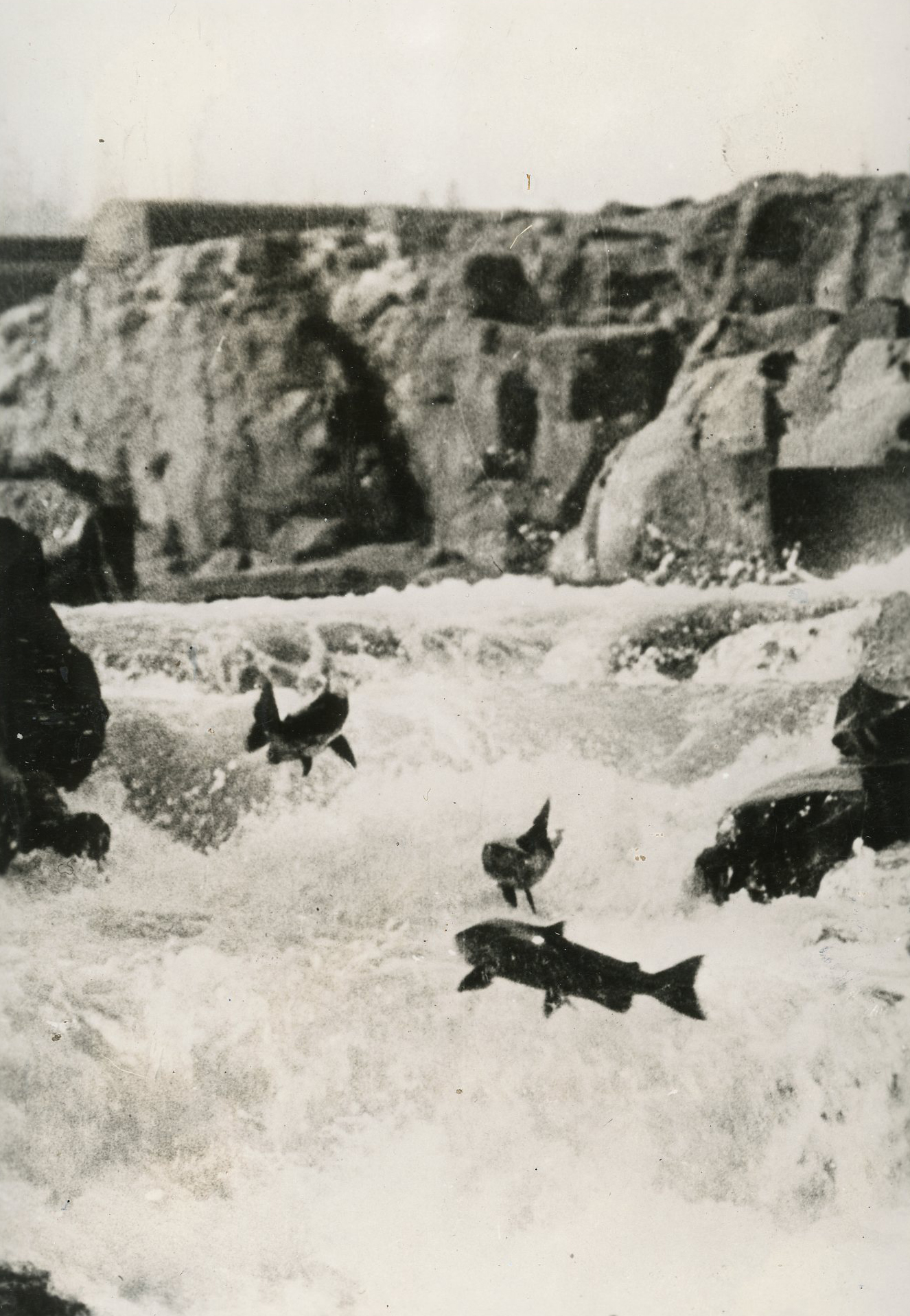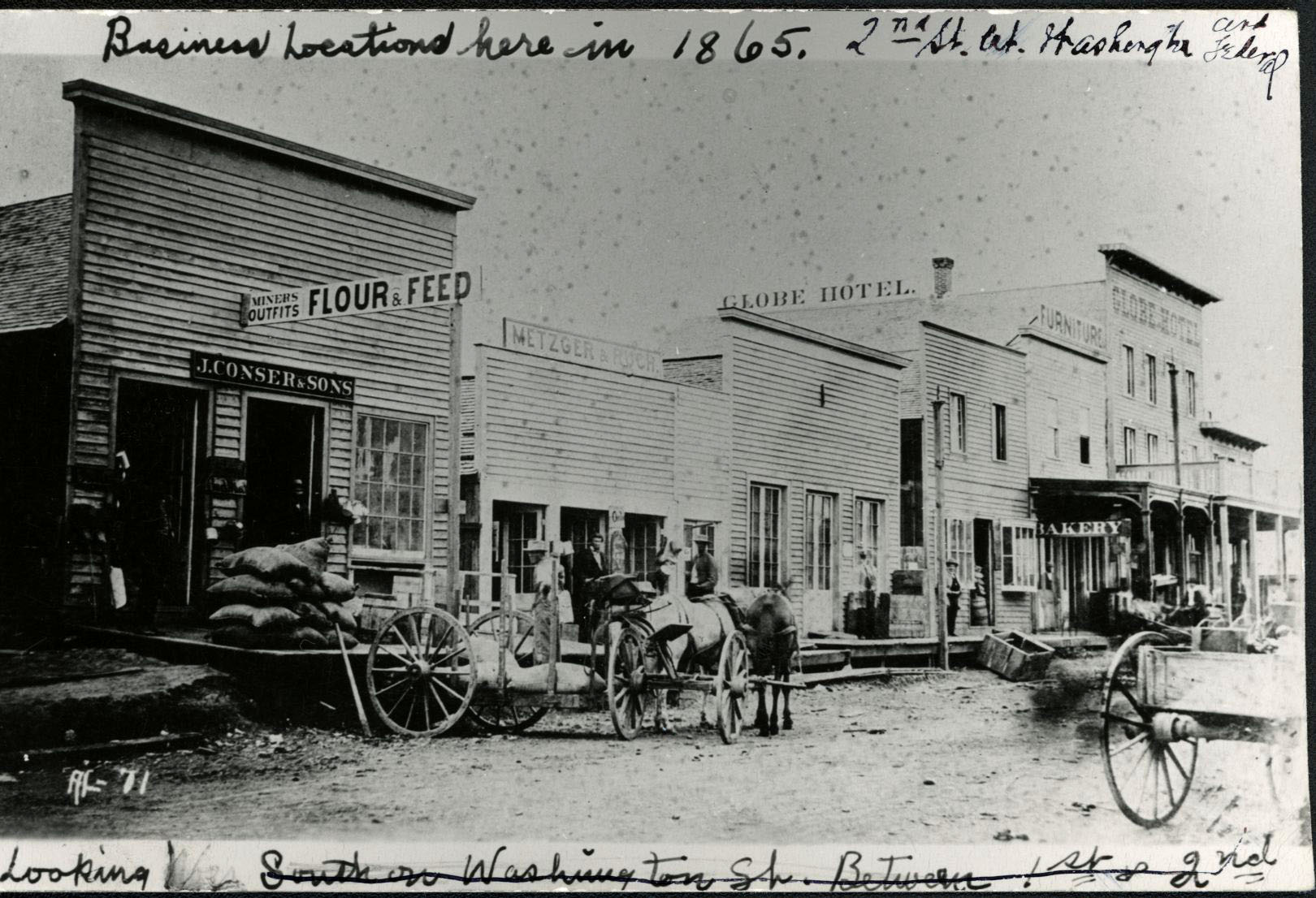Seufert Brothers Company was the leading salmon packer on the Middle Columbia River from the mid-1890s to the mid-1950s. Beginning in 1867, industrial processing and canning techniques had transformed the river’s anadromous fish runs into a valuable commodity. At first, the swift currents of the Mid-Columbia confined commercial fishing interests to the estuary, but in 1879 the introduction of fish wheels made it possible to catch salmon in the upstream rapids, where traps, seines, and gillnets generally could not function. Wheels, either fixed to the bank or attached to scows, scooped fish from the river with shocking efficiency. When the Northern Pacific Railroad reached The Dalles in 1883, making it a feasible site for canneries, packers rushed to establish operations there.
In 1884, Francis A. and Theodore J. Seufert built their first wheel on land they had purchased three miles east of The Dalles. They initially leased part of the property to another partnership, Everding and Farrell, which built a salmon cannery there in 1886. Ten years later, Seufert Brothers bought the facility for $2,500, beginning a process of expansion that would culminate in the ownership of four canneries, more than a dozen fish wheels, and much of the riparian property between The Dalles and Celilo Falls, about fifteen miles upriver. The company’s prodigious output helped make canned salmon Oregon’s second largest export in the early twentieth century, but it also contributed to the precipitous decline of fish runs during the same period.
Seufert Brothers occasionally ran afoul of organized labor, which resented the company’s employment of Chinese butchers, and Native Americans who traditionally fished The Dalles-Celilo reach. During the 1880s and 1890s, fish wheel owners had aggressively displaced Indians from many of the “usual and accustomed places” reserved in their 1855 treaties with the U.S. government. Although the case of U.S. v. Winans (1905) upheld the right of Native Americans to access the fisheries, Seufert Brothers did not hesitate to challenge Indian fishing when it conflicted with company interests. In addition to blasting tribal sites to make way for fish wheels, the company tried to drive away Native competitors such as Sam Williams, an enrolled Yakama who operated a scow from a moorage on company land. In the resulting lawsuit, U.S. ex. rel. Sam Williams v. Seufert Brothers (1919), company attorneys tried to establish that the Yakama Nation had no fishing rights south of the Columbia River. Seufert Brothers lost the case but ultimately succeeded in forcing Williams to work for them.
After Oregon outlawed fish wheels in 1926, followed by Washington in 1934, the company relied more heavily on Native fishers to supply the canneries. Seufert Brothers sold supplies and extended credit, provided scrap lumber for scaffolding, and allowed Indians to camp on company land. In 1930, the company began building aerial cableways to provide easier access to the islands at Celilo Falls. Indians who used the cables had to sell their catch to Seufert Brothers, however, and they occasionally complained about low prices. Even so, this economic relationship gave the company a vested interest in preserving the fishery, and Seufert Brothers was one of the few non-Indian organizations to protest construction of The Dalles Dam. Having lost that fight, the company shut down in 1954.
-
![Seufert Brothers Cannery.]()
Seufert Brothers Cannery, bb008485.
Seufert Brothers Cannery. Photo Benjamin A. Gifford, Oreg. Hist. Soc. Research Libr., bb008485
-
![Seufert Brothers advertisement.]()
Seufert Bros Cannery, advert.
Seufert Brothers advertisement. Francis Seufert, Wheels of Fortune, (Portland: Oreg. Hist. Soc. Press 1981), p. 236
-
![Fish wheel at Bradford Island on the Columbia River, Wasco County.]()
Fish wheel at Bradford Island, Columbia River, bb008490.
Fish wheel at Bradford Island on the Columbia River, Wasco County. Oreg. Hist. Soc. Research Libr., bb008490
-
![Seufert Brothers Cannery, The Dalles.]()
Seufert Brothers Cannery, stereoscope, bb008488.
Seufert Brothers Cannery, The Dalles. Oreg. Hist. Soc. Research Libr., bb008488
Related Entries
-
Celilo Falls
Celilo Falls (also known as Horseshoe Falls) was located on the mid-Col…
-
![Columbia River]()
Columbia River
The River For more than ten millennia, the Columbia River has been the…
-
![Salmon]()
Salmon
The word “salmon” originally referred to Atlantic salmon (Salmo salar),…
-
![The Dalles]()
The Dalles
The Dalles is one of the oldest permanently occupied places in Oregon, …
-
![The Dalles Dam]()
The Dalles Dam
The United States Army Corps of Engineers constructed The Dalles Dam be…
Related Historical Records
Map This on the Oregon History WayFinder
The Oregon History Wayfinder is an interactive map that identifies significant places, people, and events in Oregon history.
Further Reading
Dupris, Joseph C., Kathleen S. Hill, and William H. Rodgers, Jr. The Si’lailo Way: Indians, Salmon and Law on the Columbia River. Durham, NC: Carolina Academic Press, 2006.
Fisher, Andrew H. “Reserved for Whom?: Defending and Defining Treaty Rights on the Columbia River, 1880-1920.” In The Power of Promises: Rethinking Indian Treaties in the Pacific Northwest, edited by Alexandra Harmon. Seattle: University of Washington Press (2008), pp. 186-214.
Seufert, Francis. Wheels of Fortune. Portland: Oregon Historical Society Press, 1980.
Taylor, Joseph. Making Salmon: An Environmental History of the Northwest Fisheries Crisis. Seattle: University of Washington Press, 1999.
Smith, Courtland L. Salmon Fishers of the Columbia. Corvallis: Oregon State University Press, 1980.












